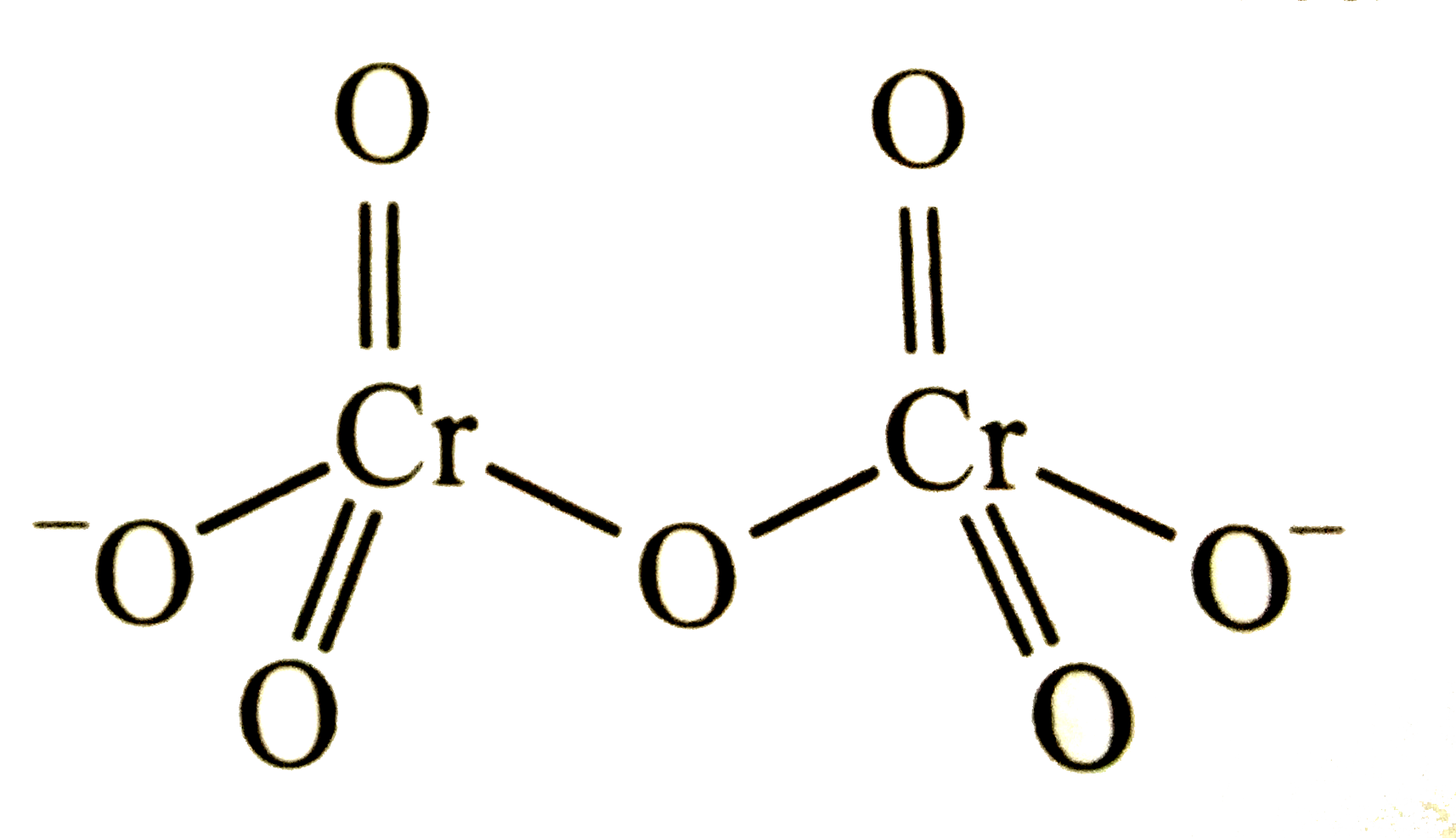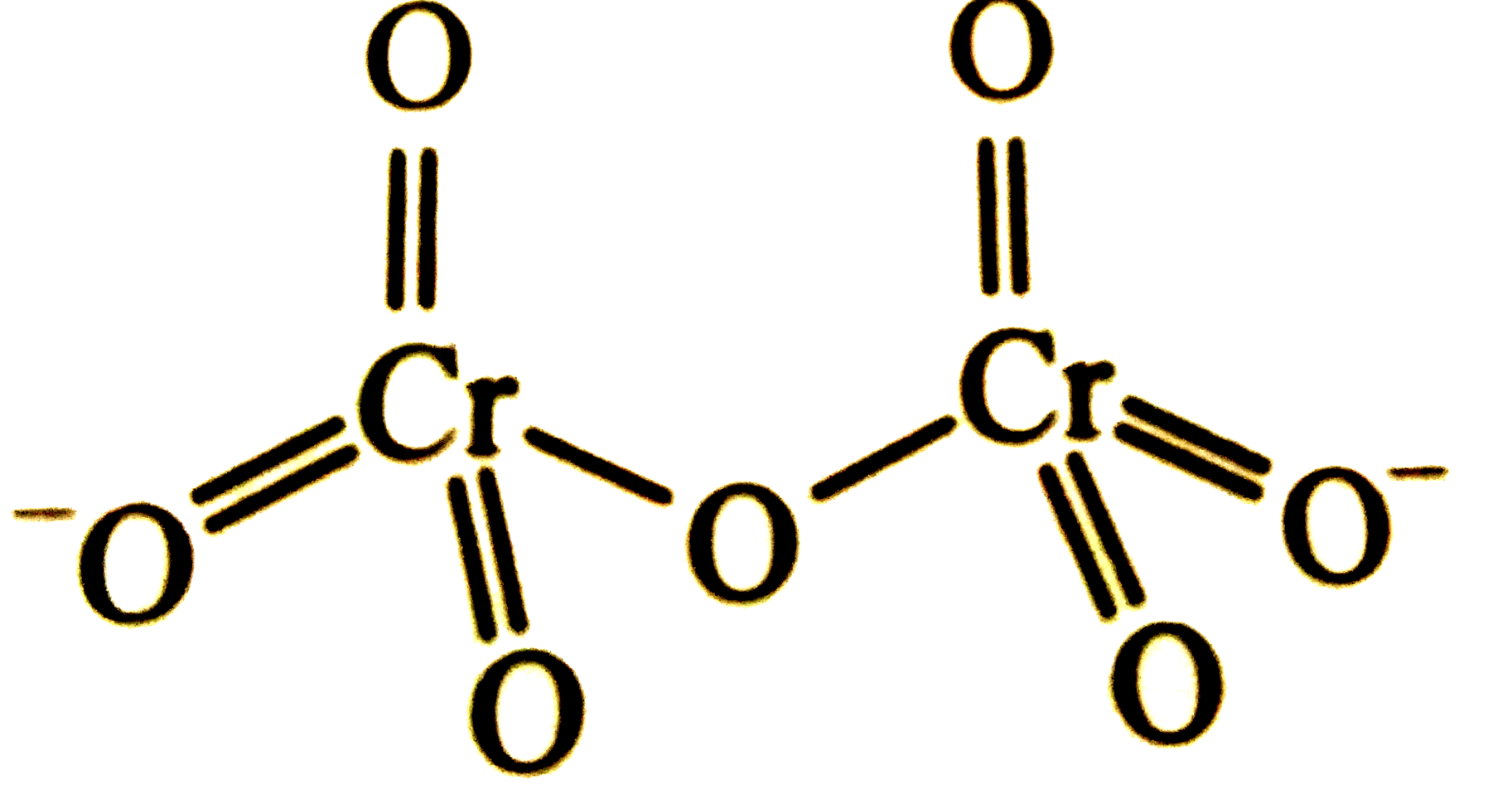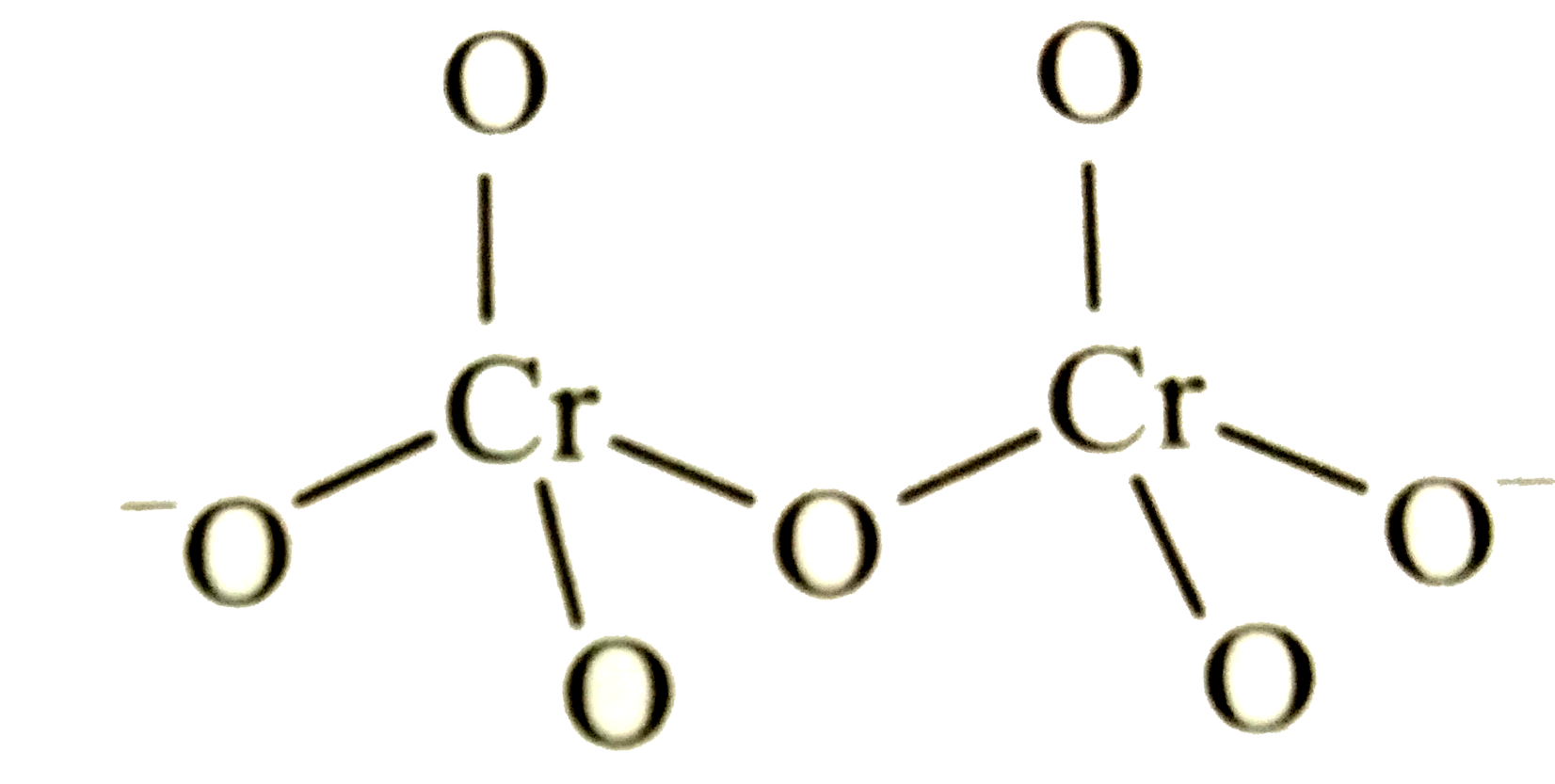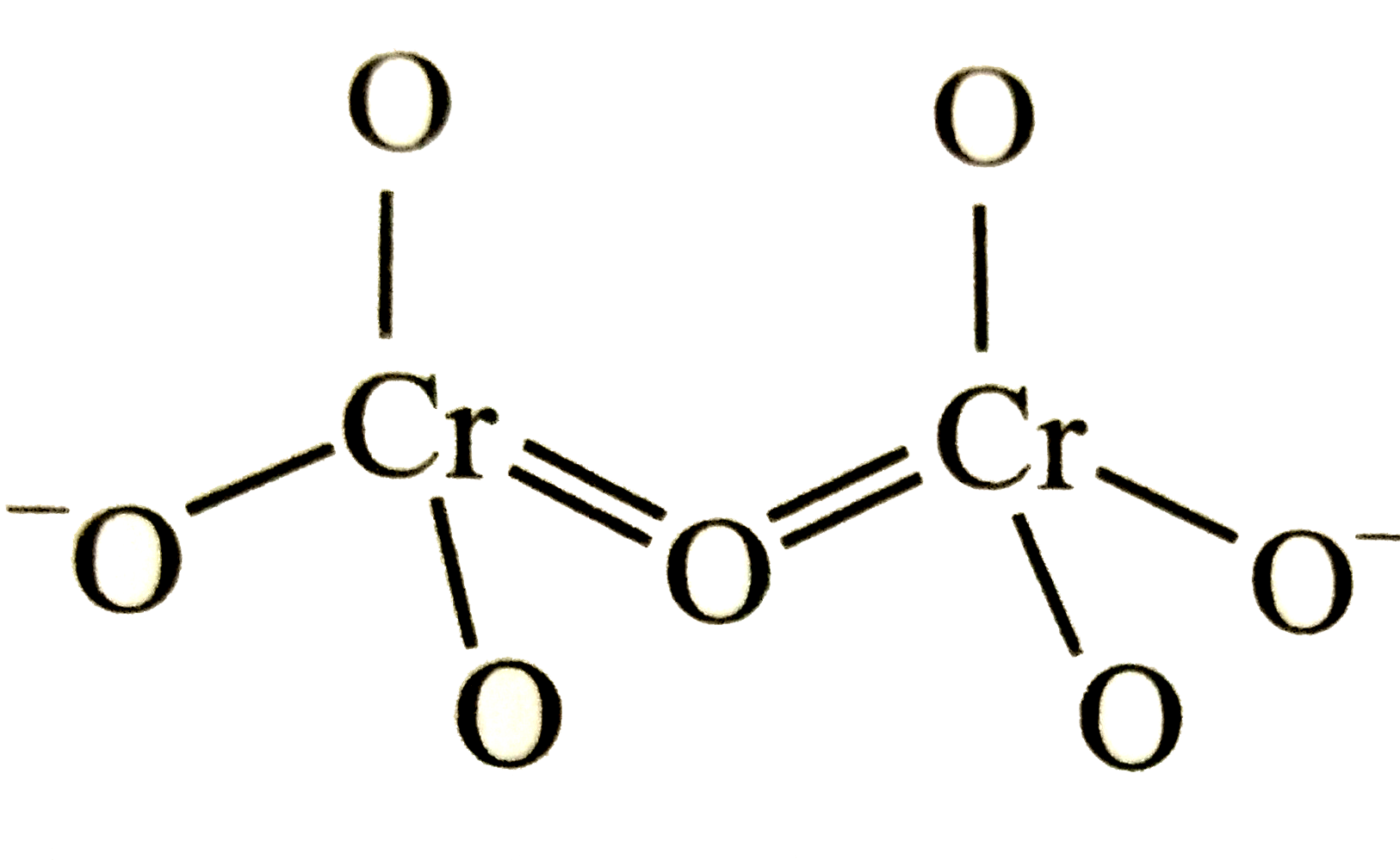(a) What is lanthanoid contraction and write its consequences ? (b) Draw the structure of dichromate ion.
Step-by-Step Text Solution
(a) What is lanthanoid contraction and write its consequences?
1. Definition of Lanthanoid Contraction:
- Lanthanoid contraction refers to the steady decrease in the size of atoms or ions across the lanthanide series (elements with atomic numbers 57 to 71). As the atomic number increases, the atomic and ionic sizes decrease.
2. Reason for Lanthanoid Contraction:
- This contraction occurs due to the poor shielding effect of the 4f orbitals. The 4f electrons do not effectively shield the outer electrons from the nuclear charge, leading to an increase in the effective nuclear charge experienced by the outer electrons.
3. Understanding Shielding Effect:
- The shielding effect is the phenomenon where inner electrons shield outer electrons from the full effect of the nuclear charge. In the case of lanthanides, the 4f electrons are located further from the nucleus and do not shield the outer electrons effectively.
4. Consequences of Lanthanoid Contraction:
- Similarities in Ionic Sizes: The lanthanoid contraction results in the ionic sizes of the lanthanides being very similar, making it difficult to separate them by conventional chemical methods.
- Increased Density: The contraction leads to an increase in density of the lanthanide elements as you move from lanthanum (La) to lutetium (Lu).
- Chemical Properties: The contraction affects the chemical properties of the lanthanides, making them more similar to each other.
- Impact on Compounds: The lanthanoid contraction also influences the properties of their compounds, such as solubility and stability.
(b) Draw the structure of dichromate ion.
1. Identify the Formula:
- The dichromate ion is represented as Cr₂O₇²⁻.
2. Drawing the Structure:
- Start with two chromium (Cr) atoms.
- Each chromium atom is bonded to four oxygen (O) atoms.
- Two of the oxygen atoms are connected to each chromium atom through double bonds (C=O).
- The remaining two oxygen atoms are connected to the chromium atoms through single bonds (C-O), and one of these single-bonded oxygen atoms acts as a bridge between the two chromium atoms.
3. Adding Charges:
- The overall charge of the dichromate ion is -2. This can be represented by placing the negative charges on the single-bonded oxygen atoms.
4. Final Structure:
- The final structure can be represented as:
O∣∣∣∣Cr−O⁻∣∣O∣∣Cr=O∣∣O
- The two double-bonded oxygen atoms are shown with double lines, and the single-bonded oxygen atoms are shown with single lines. The negative charges can be indicated on the single-bonded oxygen atoms.
- Lanthanoid contraction refers to the steady decrease in the size of atoms or ions across the lanthanide series (elements with atomic numbers 57 to 71). As the atomic number increases, the atomic and ionic sizes decrease.
- This contraction occurs due to the poor shielding effect of the 4f orbitals. The 4f electrons do not effectively shield the outer electrons from the nuclear charge, leading to an increase in the effective nuclear charge experienced by the outer electrons.
- The shielding effect is the phenomenon where inner electrons shield outer electrons from the full effect of the nuclear charge. In the case of lanthanides, the 4f electrons are located further from the nucleus and do not shield the outer electrons effectively.
- Similarities in Ionic Sizes: The lanthanoid contraction results in the ionic sizes of the lanthanides being very similar, making it difficult to separate them by conventional chemical methods.
- Increased Density: The contraction leads to an increase in density of the lanthanide elements as you move from lanthanum (La) to lutetium (Lu).
- Chemical Properties: The contraction affects the chemical properties of the lanthanides, making them more similar to each other.
- Impact on Compounds: The lanthanoid contraction also influences the properties of their compounds, such as solubility and stability.
- The dichromate ion is represented as Cr₂O₇²⁻.
- Start with two chromium (Cr) atoms.
- Each chromium atom is bonded to four oxygen (O) atoms.
- Two of the oxygen atoms are connected to each chromium atom through double bonds (C=O).
- The remaining two oxygen atoms are connected to the chromium atoms through single bonds (C-O), and one of these single-bonded oxygen atoms acts as a bridge between the two chromium atoms.
- The overall charge of the dichromate ion is -2. This can be represented by placing the negative charges on the single-bonded oxygen atoms.
- The final structure can be represented as:
O∣∣∣∣Cr−O⁻∣∣O∣∣Cr=O∣∣O
- The two double-bonded oxygen atoms are shown with double lines, and the single-bonded oxygen atoms are shown with single lines. The negative charges can be indicated on the single-bonded oxygen atoms.
Topper's Solved these Questions
- D AND F-BLOCK ELEMENTSBOOK - MODERN PUBLICATIONCHAPTER - D AND F-BLOCK ELEMENTSEXERCISE - REVISION EXERCISES ( LONG ANSWER QUESTION)
24 Videos
- D AND F-BLOCK ELEMENTSBOOK - MODERN PUBLICATIONCHAPTER - D AND F-BLOCK ELEMENTSEXERCISE - HIGHER ORDER THINKING SKILLS
16 Videos
- D AND F-BLOCK ELEMENTSBOOK - MODERN PUBLICATIONCHAPTER - D AND F-BLOCK ELEMENTSEXERCISE - REVISION EXERCISES (VERY SHORT ANSWER QUESTION)
25 Videos
- CHEMISTRY IN EVERYDAY LIFE BOOK - MODERN PUBLICATIONCHAPTER - CHEMISTRY IN EVERYDAY LIFE EXERCISE - UNIT PRACTICE TEST
13 Videos
- ELECTROCHEMISTRY BOOK - MODERN PUBLICATIONCHAPTER - ELECTROCHEMISTRY EXERCISE - UNIT PRACTICE TEST
20 Videos
Similar Questions
Knowledge Check
Structure of dichromate ion is:
ALinear unsymmetrical Cr-O-CrBLinear symmetrical Cr-O-CrCNon-Linear unsymmetrical Cr-O-CrDNon-Linear symmetrical Cr-O-CrIdentify the correct structure of dichromate ion.
A B
B C
C D
D
What is the structure of hydronium ion
ASquare planerBTrigonal bipyramidalCTetrahedralDTrigonal pyramidal
What is meant by lanthanoid contraction ?
View SolutionWhat is meant by 'lanthanoid contraction'?
View SolutionWhat is lanthanoid contraction? What are the consequences of lanthanold contraction?
View SolutionDraw the structures of chromate and dichromate ions.
View SolutionWhat is meant by 'lanthanoid contraction'?
View Solution
